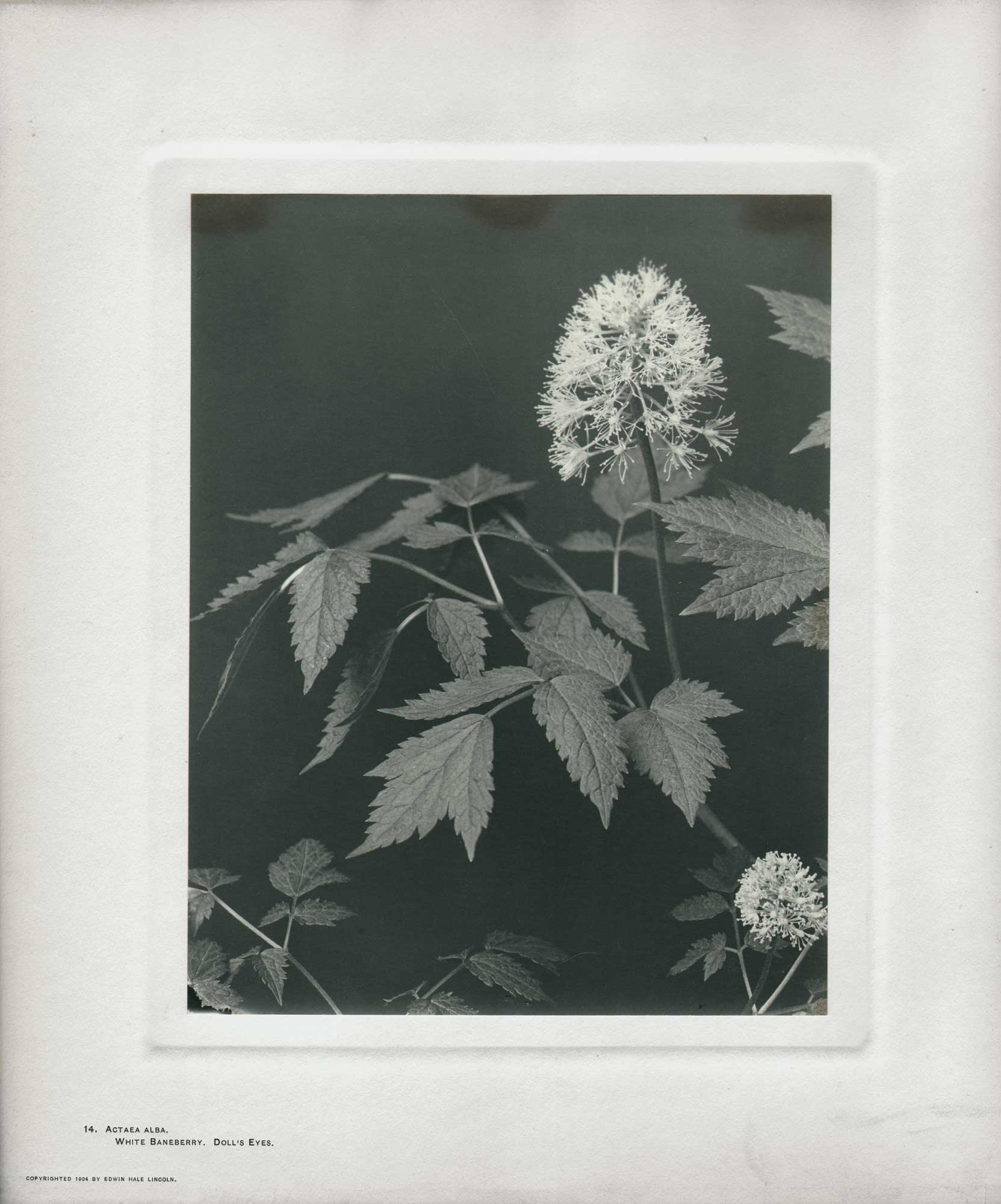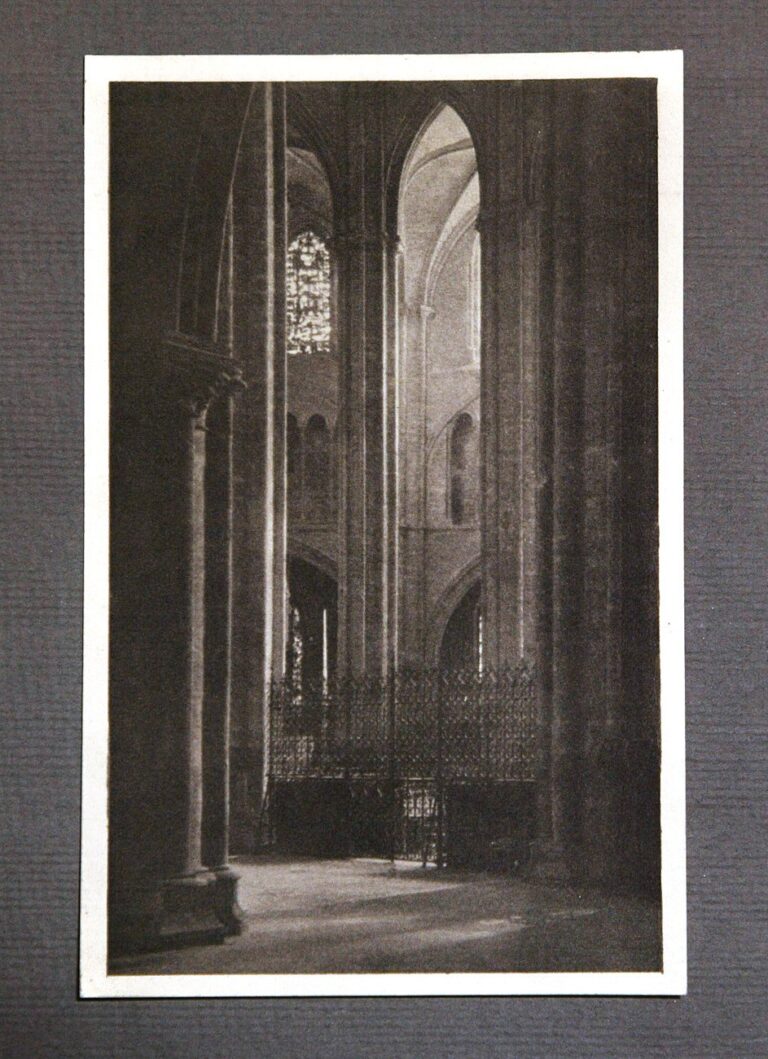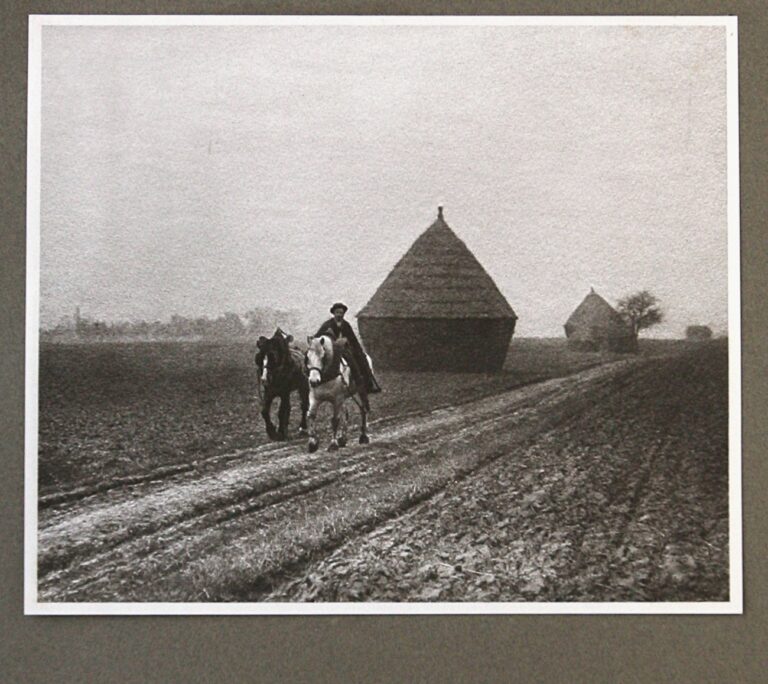
Actaea Alba | White Baneberry | Doll’s Eyes
Actaea pachypoda
Actaea pachypoda, the white baneberry or doll’s-eyes, is a species of flowering plant in the genus Actaea, of the family Ranunculaceae. The plant is native to eastern North America, in eastern Canada, and the Midwestern and Eastern United States. It prefers clay to coarse loamy upland soils, and is found in hardwood and mixed forest stands. – Wikipedia
In December of 2018, Christie’s auction house sold an extremely rare complete set of American photographer Edwin Hale Lincoln’s masterpiece: Wild Flowers of New England, published in Pittsfield, MA from 1910-1914.
Copyrighted in 1904, the first year Lincoln began this Magnum opus, Plate #14. Actaea Alba. White Baneberry, Doll’s Eyes, was one of the very first published images from the complete portfolio of 400 individually mounted platinum prints issued over sixteen parts in eight volumes.
The house included the following description of this work:
Lincoln’s obsessive project to capture the flora of New England produced this masterpiece of 20th-century photography. A transitional figure in botanical photography, Lincoln’s work combines the philosophical outlook of the Transcendentalists with a cool aesthetic modernism. “With slow looking, each [print] becomes a marvel of order and ornament. Nature itself emerges as an artist of infinite inventiveness … Like Thoreau, [Lincoln] had a reverence for nature that was as uncompromising as his coolly objective vision” (Johnson). His use of the platinum process, along with close-up shots against flat backgrounds, resulted in tonally complex images with remarkable depth.
Lincoln began work on this series in 1904, first producing a three-volume set with only 75 plates. The project continued for another ten years, culminating in this edition of 400 prints. Lincoln printed and assembled the individual parts himself, producing a special set for each subscriber.
Donald A. Heald, a New York City based dealer specializing in Rare Books, Prints & Maps includes this expanded biography of Edwin Hale Lincoln for an incomplete set of Wildflowers of New England they had for sale in 2024:
Edwin Hale Lincoln: 1848-1938
Edwin Hale Lincoln (1848 – 1938) was born in Westminster, Massachusetts. Following service in the Civil War as a drummer boy and work as a page in the Massachusetts House of Representatives, he entered the photographic profession in Brockton in 1876. His early work included photographing yachts under full sail and documenting large estates. He visited Lenox initially in 1883 and moved permanently to the Berkshire area ten years later. His move coincided with the height of the development of Berkshire’s “Summer Cottages,” and Lincoln photographed many of these grand structures in the following years. Also at the end of the 19th-century, Lincoln began what was to become an extensive study of New England wild flowers, all photographed with a large-format view camera. The complete work, self-published between 1910 and 1914 in sixteen parts, forming eight volumes consisting of 400 platinum prints. This remarkable group of photographs from Lincoln’s superb modernist photobook produced between 1893 and 1914 reveals Lincoln’s direct and straightforward vision, his skill as a large format photographer, and his craftsmanship in producing notoriously difficult platinum prints. By combining the philosophical outlook of the Transcendentalists with a cool aesthetic modernism, the photographer’s clear and precise approach to image-making stands out from the soft-focus styles of his Photo-Secessionist contemporaries. A proto-conservationist, Lincoln was painstaking in his attempts to photograph each specimen without further endangering the species: with this in mind he would carefully dig up the selected plant, wrap the roots in moss, and return to his studio. Here he replanted his finds, allowing them to continue to grow until they reached their peak. He then took the required photograph using only the natural light from a window in his studio, taking only a single exposure of each plant. The large negative was quickly developed and printed by hand on platinum paper. After the exposure was made, the plant was returned unharmed to the spot in the woods where he had found it. Lincoln’s care and attention to the individual plants seems to have suffused the resulting images with vivacity, while his use of the platinum process, along with close-up shots against flat backgrounds, resulted in tonally complex images with remarkable depth. “With slow looking, each [print] becomes a marvel of order and ornament. Nature itself emerges as an artist of infinite inventiveness…Like Thoreau, [Lincoln] had a reverence for nature that was as uncompromising as his coolly objective vision” (Johnson). Lincoln developed strong connections with the American Arts & Crafts movement and his work appeared in several issues of Gustave Stickley’s The Craftsman, the movement’s preeminent publication. Lincoln’s photographs of New England’s wild flowers clearly portrayed in fine detail against plain backgrounds and handsomely printed with a strong range of tones can be viewed as elegant precursors to the “straight” and “pure” modernist photographs produced in the later 1920s and 1930s by Imogen Cunningham, Edward Weston, Ansel Adams, and other members of the loosely associated Group f.64.



